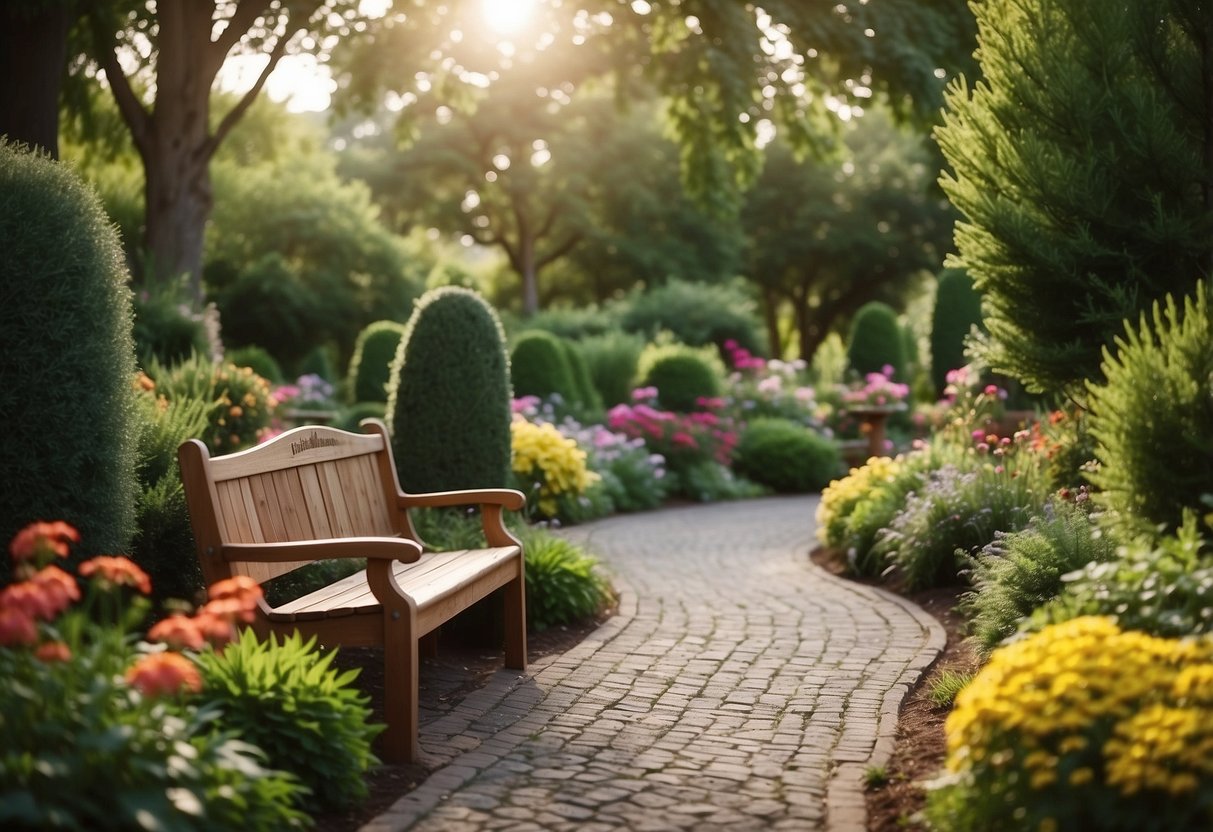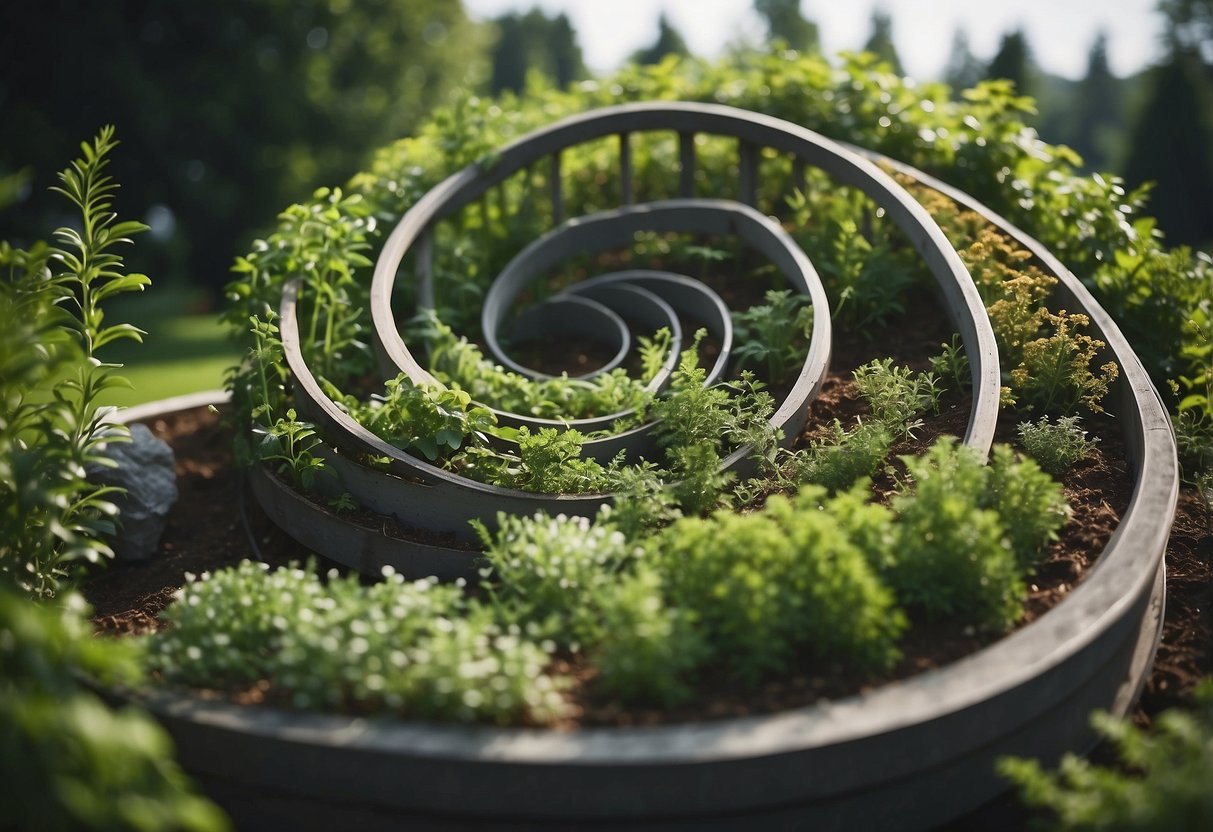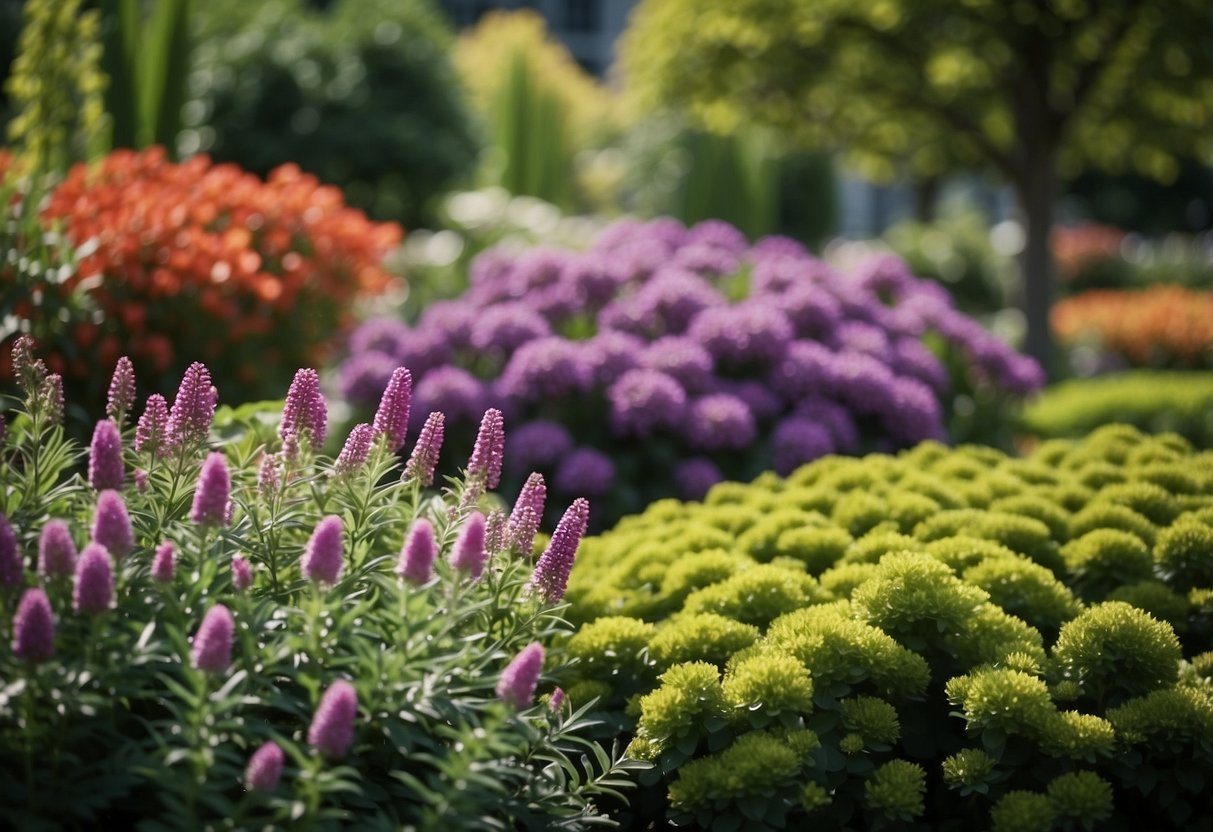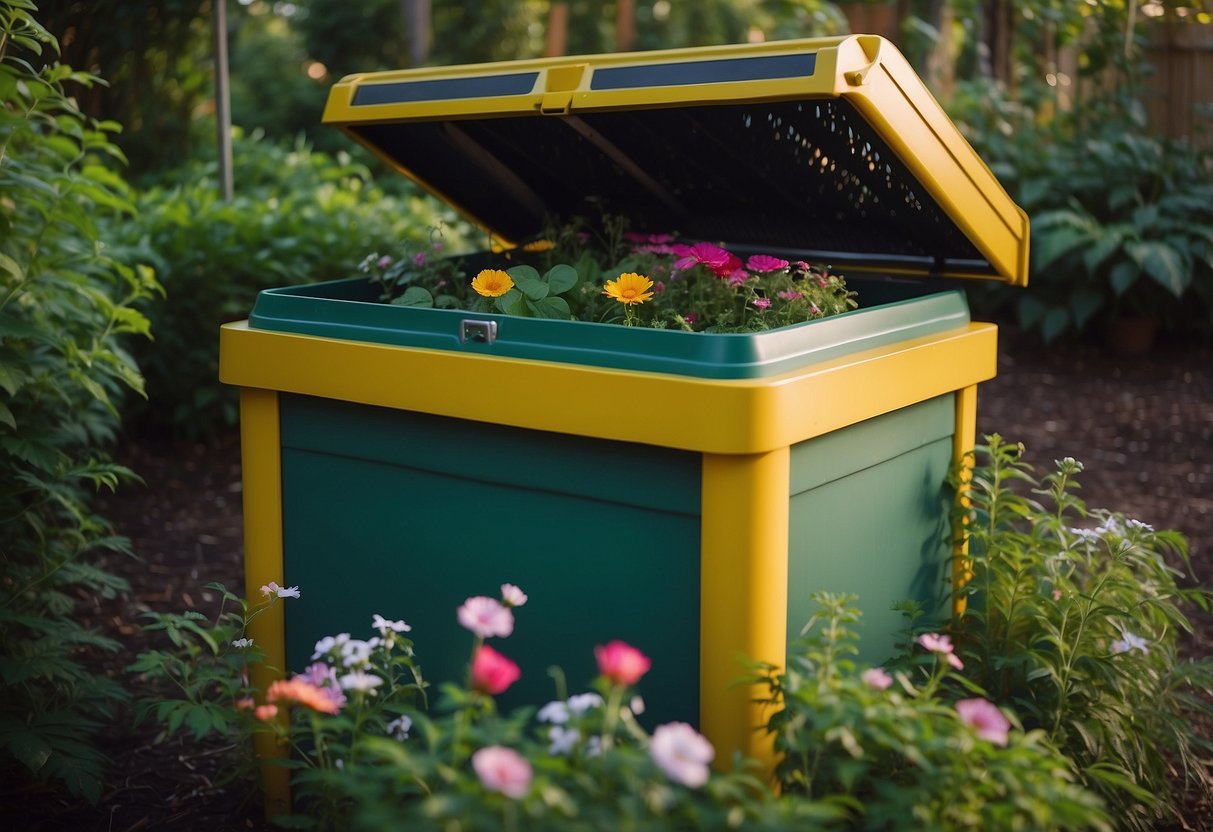Evergreen Garden Ideas: Year-Round Beauty Tips
Creating a garden that stays green and vibrant all year long is a dream for many. Whether you have a small urban yard or a spacious countryside garden, evergreen plants can add color, structure, and life throughout every season.

Why should you consider adding evergreens to your garden? These versatile plants not only retain their foliage all year but also provide a lush backdrop for your other seasonal flowers. With the right mix of evergreens, your garden will always have something beautiful to offer.
1) Vertical Planters

Vertical planters are a great way to save space in your garden. You can attach planters to a wall or fence to give you more room for other activities. A wood slat fence with planters can drastically transform your garden’s look.
You can also use a trellis panel to support pots with herbs, vegetables, and flowers. This method not only maximizes your space but also adds beauty to your garden. Consider giving the panel a coat of wood stain or paint to make it stand out and protect it from the weather.
2) Herb Spiral

A herb spiral is a fantastic way to grow a variety of herbs in a small space. It uses a spiral design to create different microclimates. You can easily build one in your garden using stones, bricks, or wood.
At the top, place herbs that prefer dry conditions like rosemary. At the bottom, plant herbs that need more water, such as mint. Check out this guide on how to build a herb spiral. It’s a creative and efficient addition to any garden.
3) Fairy Garden

Creating a fairy garden in your evergreen space adds a touch of whimsy and magic. Small pots or tiny sections of your garden can be transformed into enchanting scenes.
Use moss, pebbles, and hand-painted signs to create pathways and cozy spots. Adding miniature fairy houses and tiny doors makes it fun and imaginative.
Incorporate vining plants like morning glory or honeysuckle on small trellises for a lush, mystical effect. Choose blooming plants and colorful greenery to add vibrancy and charm.
You can even include tiny accessories like fairy-sized benches and tables. Your evergreen garden will feel like a storybook come to life.
4) Pergola with Vines

Adding a pergola with vines to your garden can create a lovely, shaded area. These structures not only look beautiful but also offer a cool retreat on hot days.
Consider planting evergreen clematis. This vine produces star-shaped white flowers with a vanilla-like aroma.
Another option is grapevines. They provide both shade and delicious grapes.
For a fast-growing choice, you might like Giant Burmese honeysuckle. Its fragrant flowers and glossy leaves can quickly cover your pergola.
5) Pallet Garden

Using pallets for a garden is both easy and fun. You can create vertical gardens by securing pots or fabric pockets to the slats. This is great for herbs and small plants.
Pallets can also be stacked to create multi-level gardening spaces. This helps save space while giving easy access to your plants.
For a rustic look, you can use pallets with some parts removed. Adding chalkboard sections for plant names adds charm and functionality.
Learn more about these charming pallet garden ideas.
6) Perennial Flower Beds

Perennial flower beds are a great way to add color to your garden that lasts all year. These plants come back every year, making them a favorite among gardeners.
You can plant flowers like chrysanthemums and snapdragons, which bloom beautifully in autumn. Adding plants with striking foliage like Japanese maples and ferns can enhance your garden’s texture and color.
Consider incorporating lush greenery like hostas and ornamental grasses for added depth and variety in your garden. This will create a serene and inviting space for you to enjoy.
7) Raised Vegetable Beds

Raised vegetable beds can make gardening easier and more fun. They allow you to control the soil quality and moisture more effectively. They also make it easier to plant, weed, and harvest without straining your back.
You can use simple materials like wooden planks, cinder blocks, or even an old sandbox for your raised beds. Raised beds not only help you grow healthy vegetables but can also add a neat look to your garden space.
Adding a trellis can help plants like tomatoes and cucumbers grow vertically. This ensures better sun exposure and saves space. Check out these creative ideas for raised garden beds.
8) Water Feature

Adding a water feature can turn your evergreen garden into a peaceful retreat. The gentle sound of water creates a calming atmosphere.
You might consider a narrow garden pool for a modern look. Or, a small stand-alone pond fits nicely on patios or decks.
Water features don’t just look good; they also attract wildlife. Watching birds and other critters enjoy your garden brings a sense of joy and connection to nature.
9) Succulents in Containers

Succulents in containers are a beautiful and low-maintenance option for your evergreen garden. They thrive in dry conditions and need little water, making them perfect for those who don’t have a lot of time for plant care.
Mix and match different types of succulents. Try combining tall, lanky succulents with low-growing ones for a striking contrast. This can make your arrangement more visually interesting.
You can use creative containers like upcycled cheese boxes or wooden crates. These unique containers add charm to your garden. Find more ideas at Epic Gardening.
10) Compost Bin

Creating a compost bin is a fantastic way to enrich your evergreen garden. You can use materials such as wooden boards or plastic storage containers to build it. Even a couple of 5-gallon buckets can work great if you have limited space.
You can find easy DIY compost bin plans that fit different garden sizes. This project doesn’t require fancy tools. A drill and some screws will usually do the job.
Place your bin in a partly shaded area to keep the compost from drying out. This keeps the garden green and thriving.
Designing Your Evergreen Garden

Creating an evergreen garden involves selecting the right plants and organizing them thoughtfully. By choosing plants that suit your climate and needs, and arranging them to enhance your space, you can enjoy year-round beauty.
Choosing the Right Plants
When selecting evergreens, consider their size, shape, and color. Tall evergreens like cedar or pine can provide privacy and windbreaks. Medium-sized shrubs such as boxwood are perfect for hedges. Low-growing plants like juniper add texture to garden borders.
Evergreens also come in a variety of colors, from deep greens to silver blues. Think about how these colors will complement other plants in your garden. It’s also wise to choose plants that are suited to your local climate to ensure they thrive.
Finally, consider the maintenance requirements. Some evergreens need more pruning than others. Choose plants that match the amount of time you can dedicate to maintaining your garden.
Garden Layout and Structure
Start by deciding the purpose of your garden areas. You might want a private sitting space, a scenic walkway, or a colorful front yard. Use taller evergreens at the edges to create privacy, while shorter varieties can line paths or borders.
Grouping evergreens in natural clusters can soften the lines of hard landscaping elements like paths and patios. Allow some plants to spill over onto pathways to create a more inviting look.
Use different shapes and sizes to add interest. For instance, tall, narrow spires add height, while round mounds can create a sense of fullness. Think about how these shapes will look in winter when their silhouettes are most noticeable.
Finally, make sure to leave enough space between plants for them to grow without overcrowding. This helps to ensure healthy, long-lasting plants and a balanced garden design.
Caring for Your Evergreen Garden

Keeping your evergreen garden healthy requires regular watering, proper fertilization, and strategic pruning. Here are some helpful tips and guidelines to ensure your garden remains lush and beautiful.
Watering and Fertilization Tips
Evergreens need adequate water, especially during dry spells. Give them a deep watering once a week in hot weather. Water early in the morning to reduce evaporation. Avoid watering at night to prevent root rot.
Mulch helps retain soil moisture and temperature. Spread a 2-inch layer of mulch around the base of your plants.
Fertilize evergreen plants annually in early spring. Use a slow-release granular fertilizer meant for evergreens. Follow the instructions carefully to avoid over-fertilizing, which can damage your plants.
Pruning and Maintenance Guidelines
Regular pruning keeps evergreens neat and encourages healthy growth. Prune in late winter or early spring before new growth starts. Use sharp, clean pruning shears to make precise cuts.
Remove dead or diseased branches first. Cut at a 45-degree angle, just above a healthy bud or branch. Do not remove more than one-third of the plant in a single season.
Check for pests and diseases periodically. Healthy evergreens are less prone to infestations and illness. Apply appropriate treatments promptly if you notice any issues.







